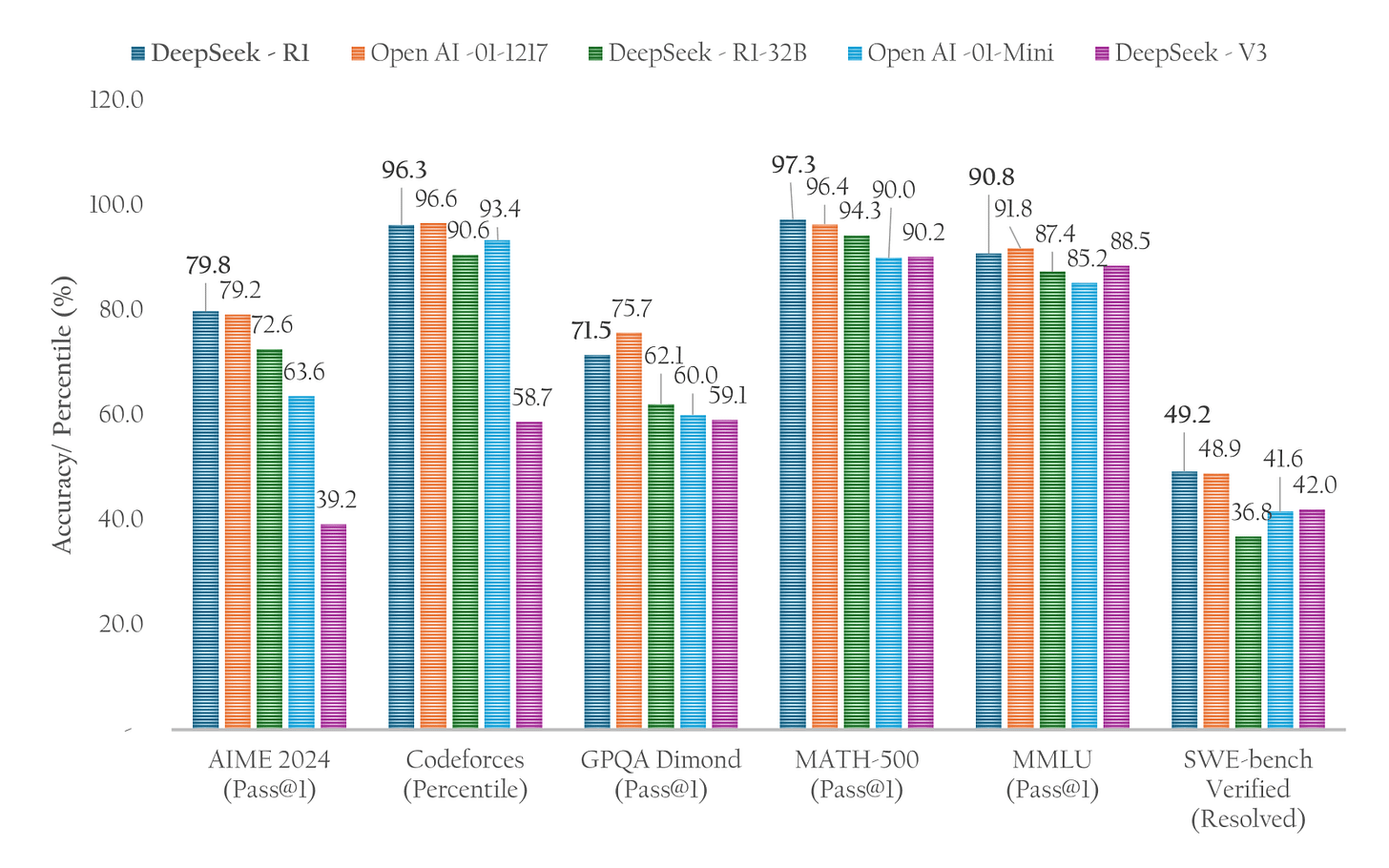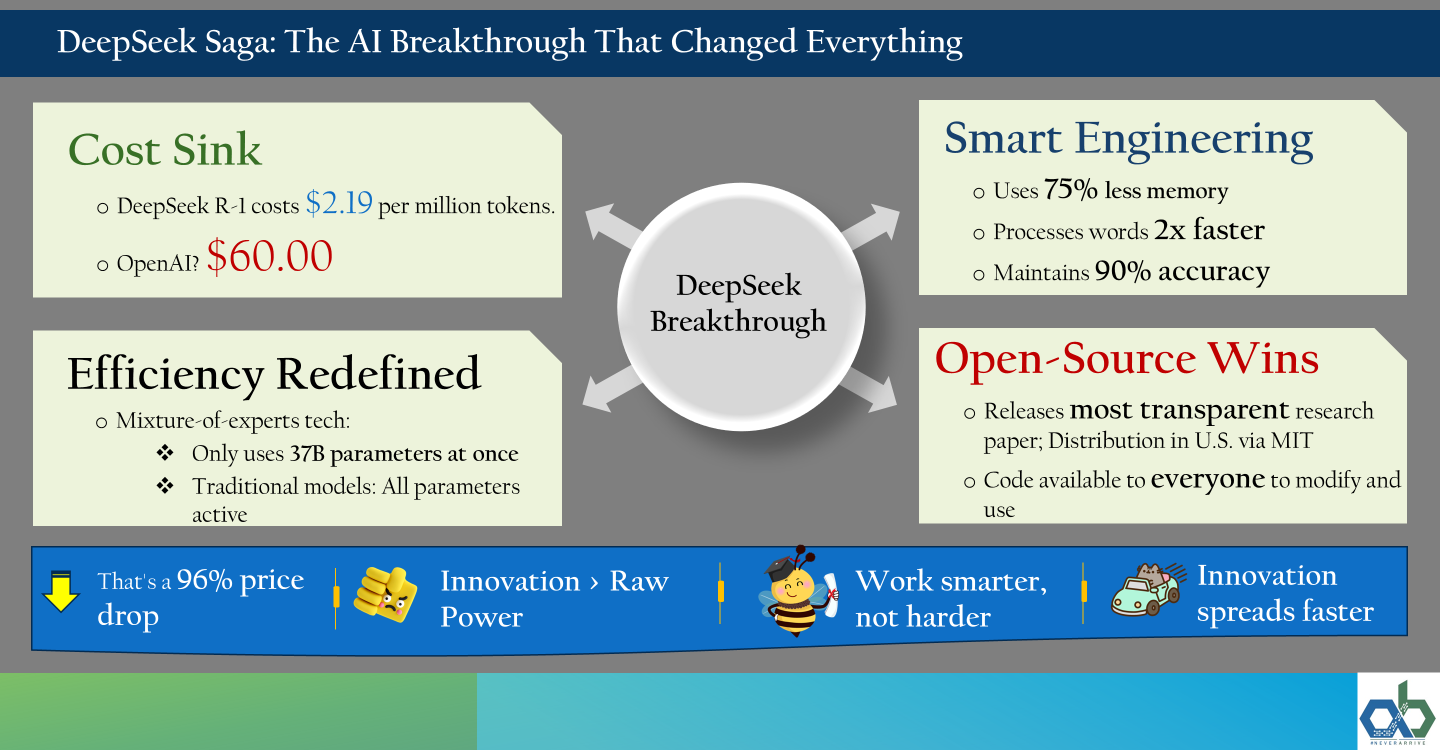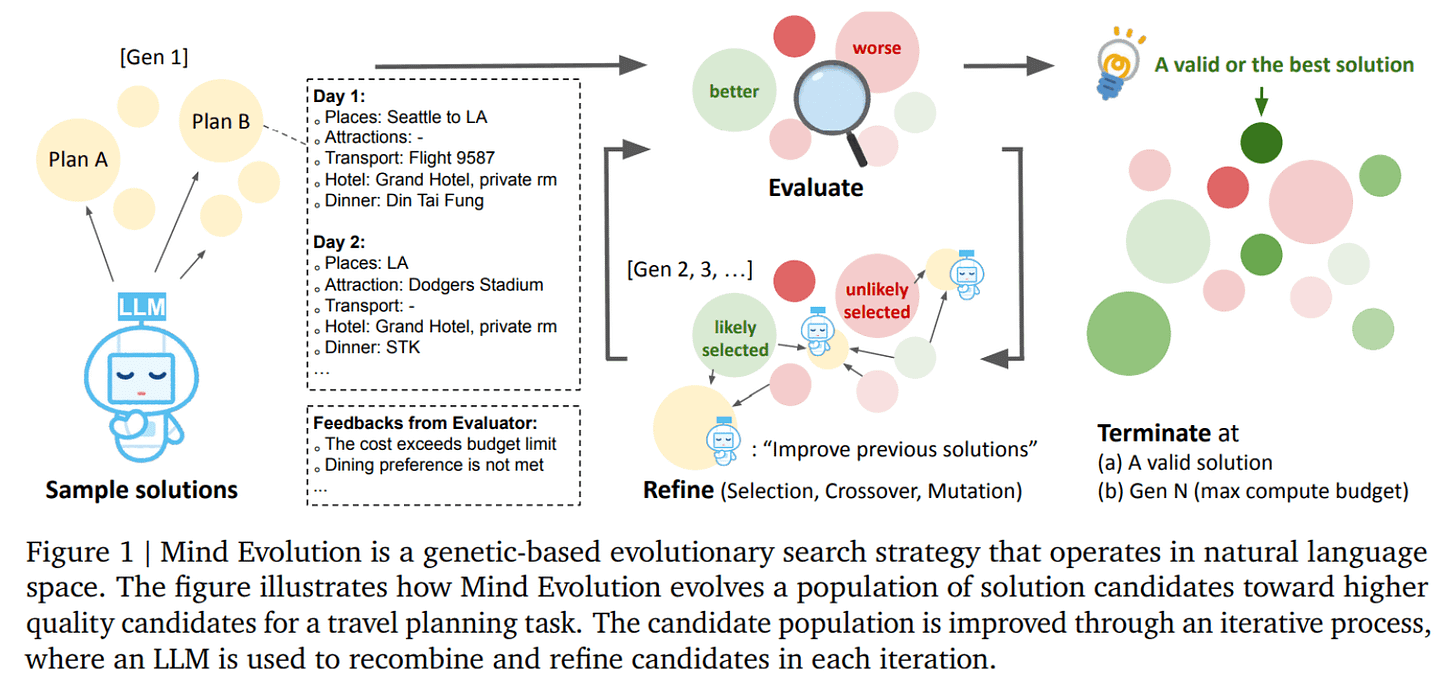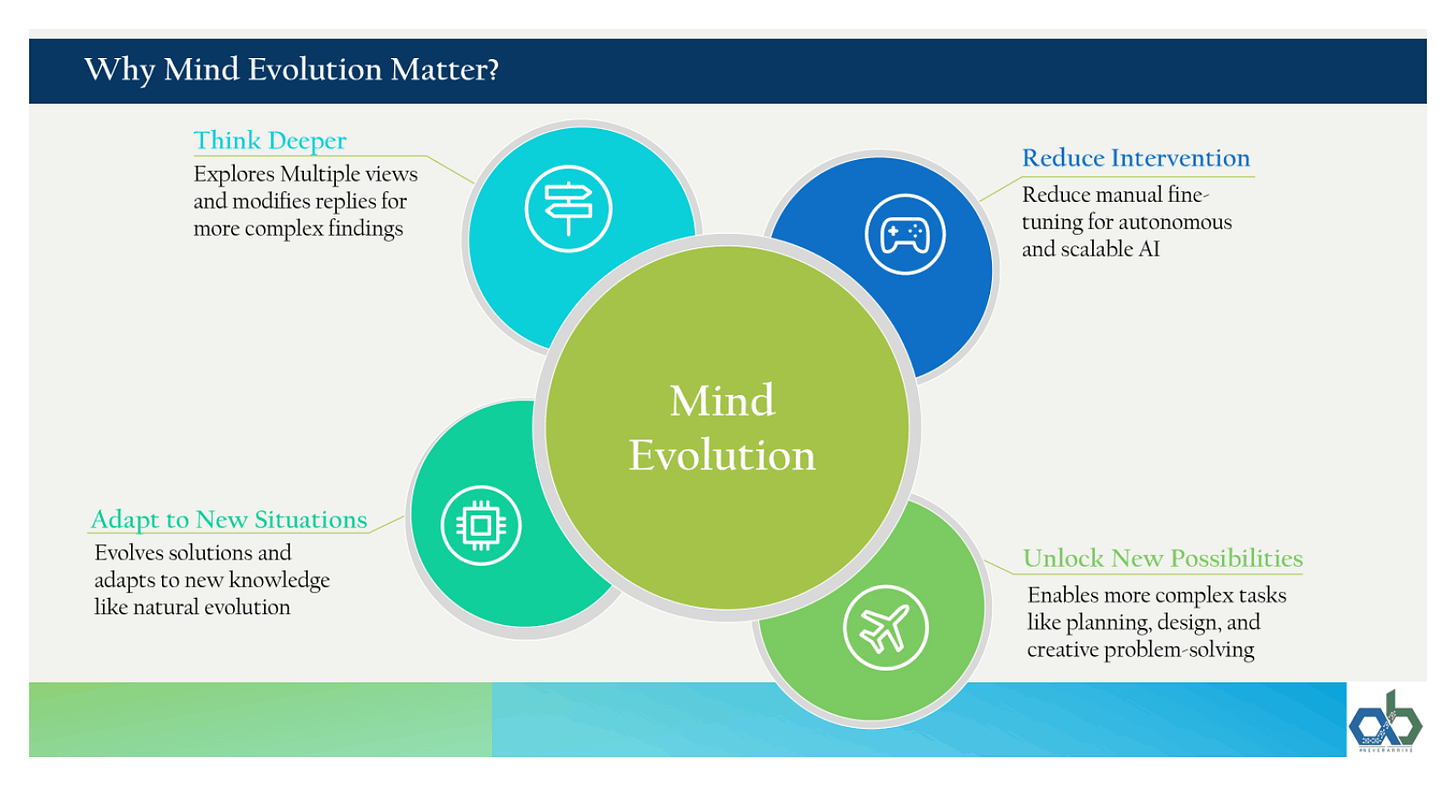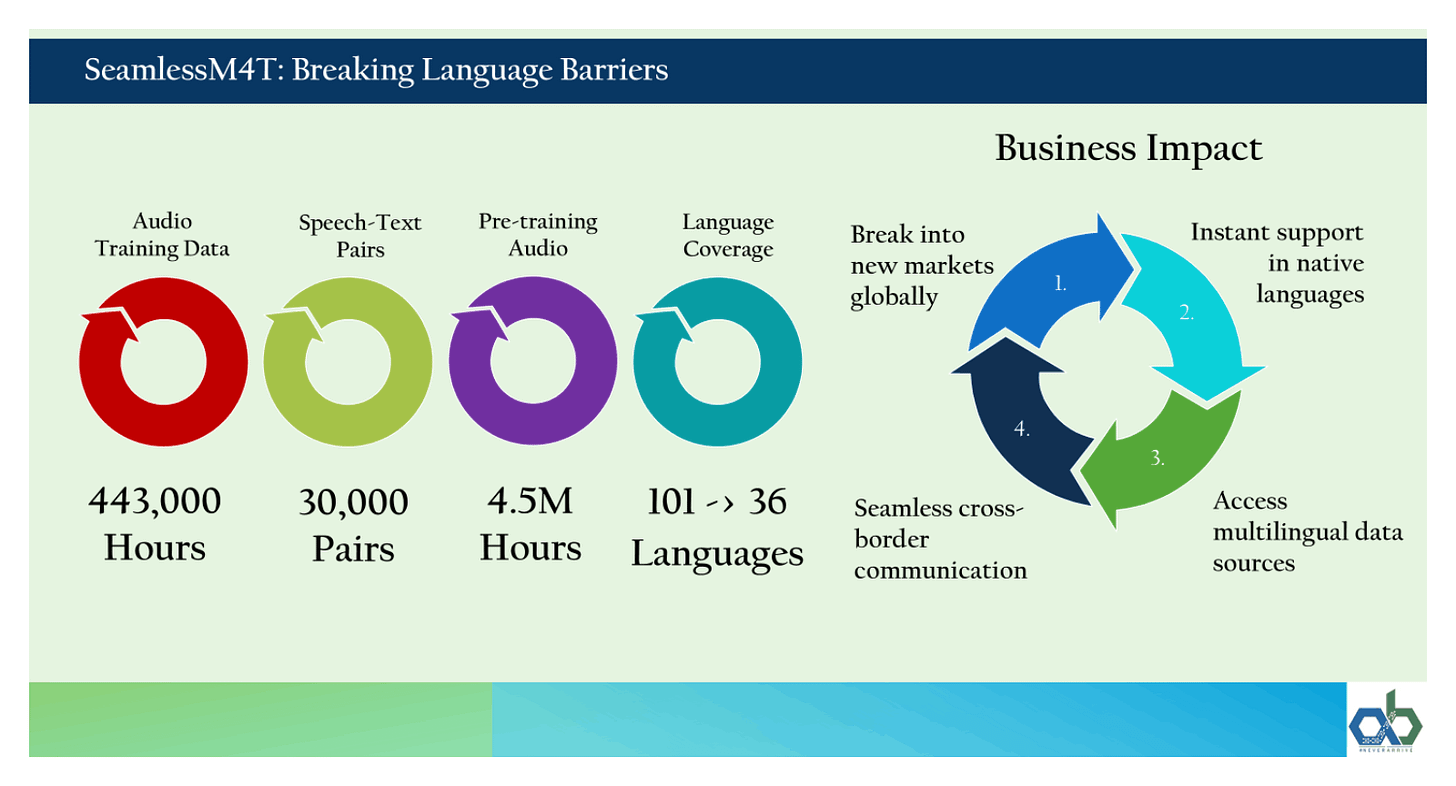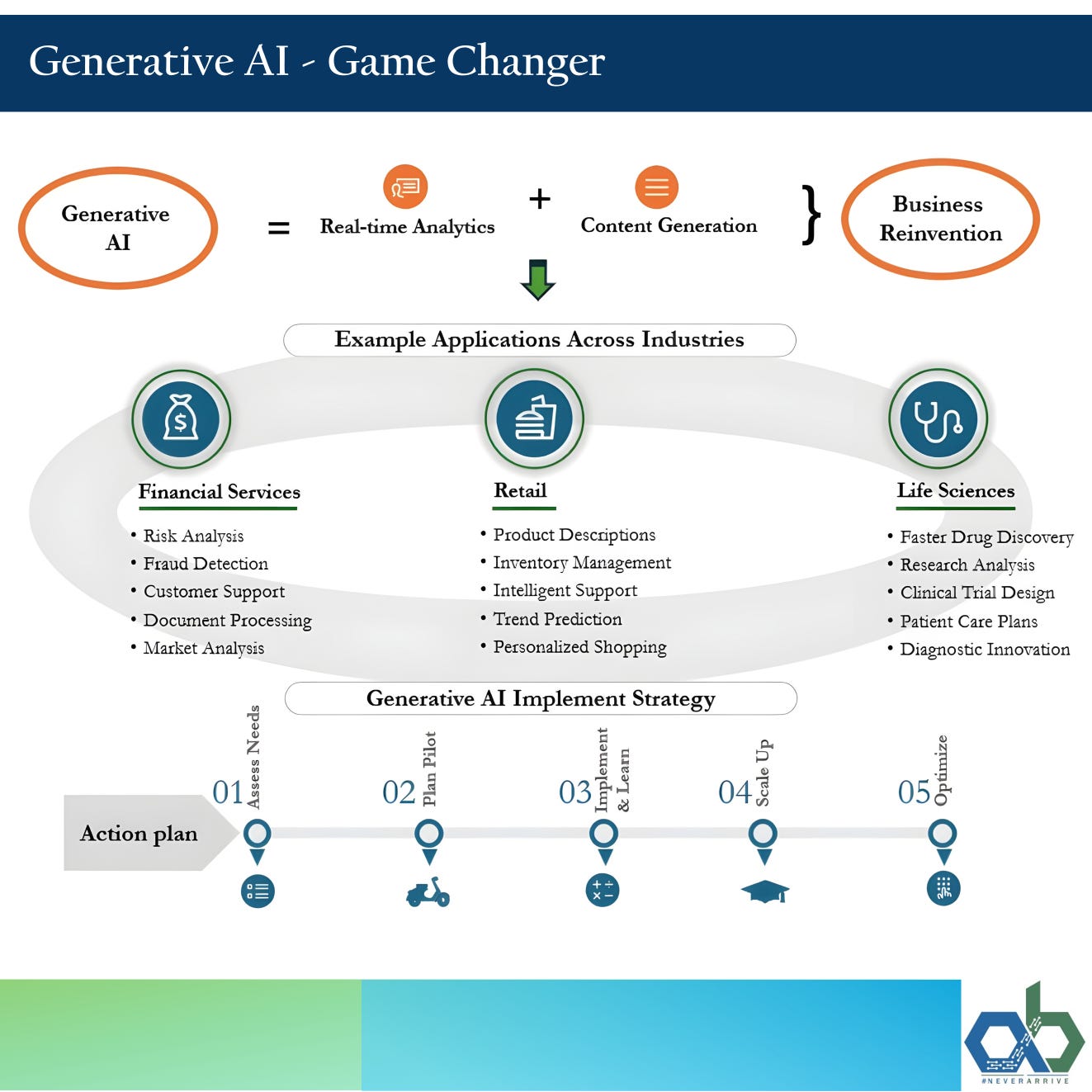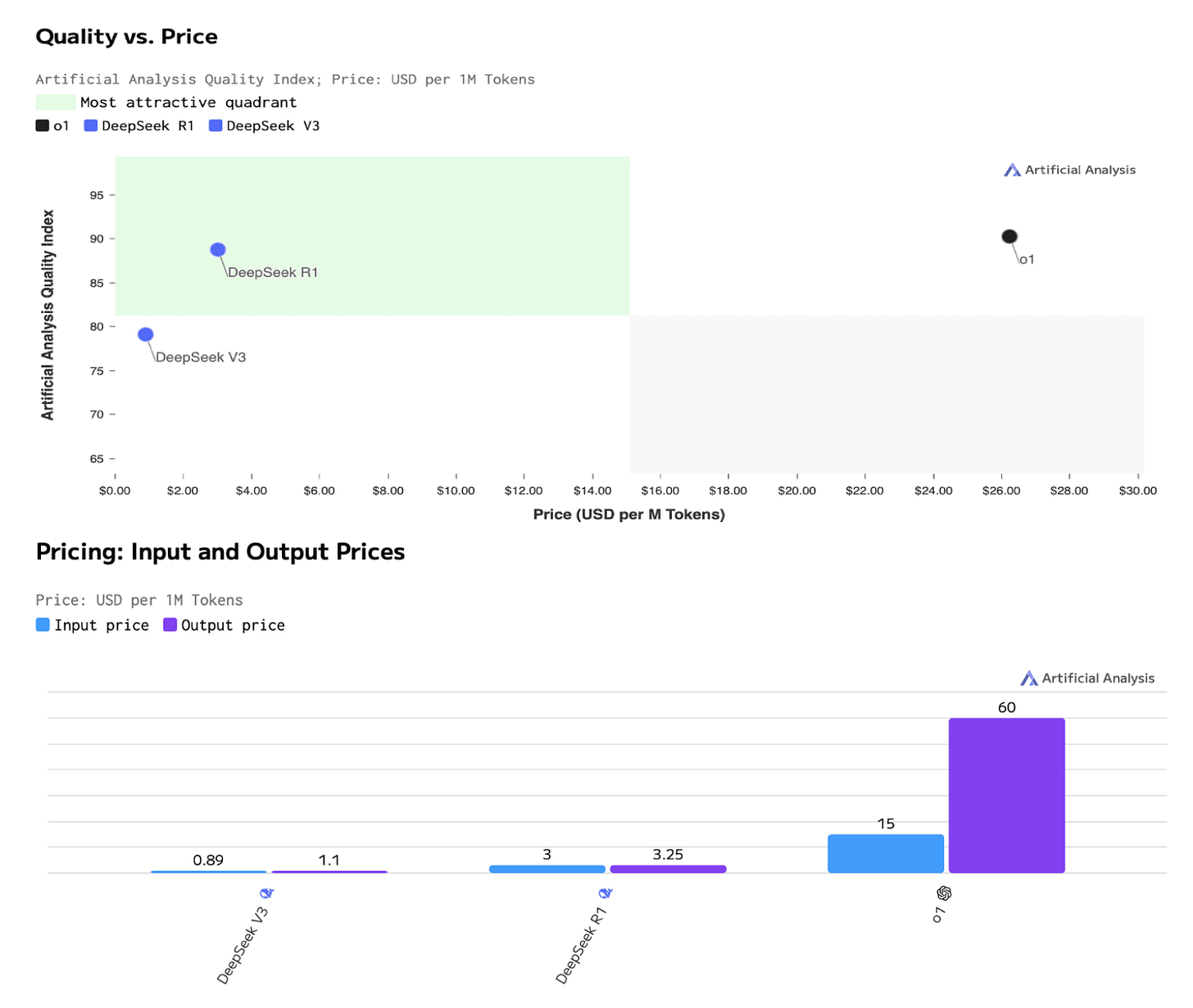Binary Circuit - January 31, 2025
Your weekly guide to most important developments in technological world
Binary Circuit investigates trends, technology, and how organizations might profit from disruption. GreenLight, brain behind Binary Circuit, finds possibilities, analyzes challenges, and develops plans to fit and grow firms to stay ahead. Looking to scale your business, partners, or AI/technology integration, schedule a free discovery call:
Welcome to Binary Circuits’ 6th weekly edition
This week's must-know developments:
DeepSeek's step change in AI efficiency: A small Chinese team trained LLM for $5.6 million to challenge OpenAI. $2.19 per million tokens vs. $60 for OpenAI.
Google improves AI reasoning: Mind Evolution technique improves AI planning and reasoning. It learns and adapts like humans. Report Word.
Meta's AI removes language barriers: SeamlessM4T translates speech directly between many languages. This could reinvent global communication.
Generative AI's inevitable business impact: AI that creates content is shifting industries. Businesses should explore its potential to improve and grow.
Let’s dive in!
What you need to know about China’s latest sensation DeepSeek? AI development accelerates and users benefits the most!
DeepSeek, a lesser-known two-year-old firm spun off from a hedge fund, has caused a stir with its exceptional performance without raising any outside funds. Interestingly, DeepSeek is a team of roughly 200 engineers and PhDs educated in China with no foreign exposure.
DeepSeek released its first LLM in 2023 and then became an overnight success in December 2024 with the release of V3 model which excelled on cost and performance. Interestingly, the company selected to introduce the new reasoning models on January 20th, President Trump’s inaugural day. The following day, Project Stargate was announced by president Trump promising $500 billion investments in AI infrastructure.
DeepSeek R1 vs OpenAI/Meta AI - Note that DeepSeek R1 was trained for $5.6 million, compared to hundreds of millions by prominent U.S. corporations.
DeepSeek-R1 outperforms OpenAI's model in 5 out of 11 benchmarks and closely matches it in the remaining six, demonstrating its competitive edge. It is competitive with the Western models in:
AIME 2024 (mathematical tasks)
MMLU (general knowledge)
AlpacaEval 2.0 (question-and-answer performance)
Chatbot Arena (UC Berkeley-affiliated leaderboard)
Things to know:
Cost Efficiency and Performance: DeepSeek's AI models, specifically DeepSeek-R1, saved 96% compared to American models while retaining performance.
Innovative Architecture: Using a Mixture of Experts (MoE) system, DeepSeek activates only relevant parameters to maximize resource efficiency.
Open Source and Accessibility: DeepSeek has made advanced AI technology more accessible by open-sourcing its models, enabling AI development and adoption.
Why DeepSeek breakthrough is important – Firstly, it questions whether the billions of dollars of investments by the Western companies in the infrastructure are justified. We think, they are because the lower cost of open-source availability will increase adoption, which will drive more data traffic and need for running inference.
Second, the technological advancements, including Multi-Head Latent Attention (MLA) and DeepSeekMoE, engineering techniques to balance processing between GPU and CPU along with reinforcement learning approach opens the way for scaling of models, which was reportedly becoming challenging.
Third, the DeepSeek breakthrough further closes the AI development gap between China and the U.S. In fact, in the four months since OpenAI's reasoning model o1 debuted in September, the first in the U.S., over ten Chinese businesses have rapidly introduced comparable models. These include Alibaba, Zhipu AI, Moonshot AI, and Shanghai AI Lab. A white paper from the China Academy of Information and Communications Technology, a state-affiliated research agency, reported last year that China accounts for 36% of the 1,328 AI LLMs worldwide.
What can the business leaders learn from DeepSeek? Fundamental AI research and “hardcore innovation” at the architectural and algorithmic level. Additionally, fostering a non-hierarchical, researcher-driven culture that encourages creativity and long-term vision.
Google’s Mind Evolution could be a game changer in improving AI reasoning skills
Mind Evolution improves large language models' (LLMs) responses to planning and reasoning tasks, allowing them to "think" more broadly.
Mind Evolution is driven by two main components:
Search algorithms, which find the optimum reasoning path, and
Genetic algorithms, which develop and evolve potential solutions using a “fitness function.”
How does Mind Evolution work?
Initialization: Creates LLM-generated natural language solutions.
Evaluation and improvement: LLM assesses and enhances solutions.
Selection: Chooses next-generation parents depending on solution quality.
Recombination: Crossover and mutation create new solutions.
Refine: Refines novel solutions using evaluation.
Iteration: Repeat until optimal solution or predefined iterations elapse.
Bit technical?Consider this: Consider having various possible answers to an issue, like multiple routes to a destination. Google's Mind Evolution is like a competition where these responses are evaluated and improved. While the bad feedback is discarded, the best "survive" and inspire greater ones. The cycle continues, improving replies until the best one appears. Like how nature grows, except ideas are selected and polished. This allows AI to creatively and successfully solve complex problems without knowing the exact steps.
Mind Evolution’s “evaluation” function, unlike traditional evaluators, works with natural language planning tasks and avoids formalizing problems. It also uses an “island” approach to explore diverse solutions, migrating optimal solutions to create new ones.
Why Mind Evolution matters:
Mind Evolution transforms AI from static models to self-improving systems, increasing strength, efficiency, and adaptability over time. It also enables to:
Think deeper: It helps the AI explore multiple views and modify its replies, yielding more complex findings.
Reduces human intervention – Reduces manual fine-tuning, enabling autonomous and scalable AI.
Adapt to new situations: This approach lets the AI "evolve" its solutions and adapt to new knowledge and circumstances, just like in nature.
Unlock new possibilities: It could help AI perform more complicated activities like planning, design, and creative problem-solving more accurately and efficiently.
Language Barrier – Meta’s AI is making it a thing of the past!
Language has long been an impediment to seamless global communication, but Meta's new AI model, SeamlessM4T, is groundbreaking. This innovative method can directly translate speech from 101 languages into spoken words in 36 target languages, in a much-needed departure from conventional way of converting speech to text, translating, and creating speech again.
Historically, machine translation, particularly for low-resource languages, faces challenges due to limited labeled datasets. SEAMLESSM4T addresses this by utilizing parallel data mining to collect audio-subtitle pairs, enabling training on a diverse range of languages without human annotation.
Facts to consider:
443,000 hours of audio with matching text were collected.
30,000 aligned speech-text pairs were created without human annotation.
The model was pre-trained on 4.5 million hours of spoken audio, allowing it to learn general speech patterns.
SeamlessM4T consists of three AI blocks, handling both text and speech inputs and outputs for efficient translation.
This faster, more accurate, and more efficient technique puts us closer to real-time translation, enabling seamless global communication for organizations, individuals, and industries.
What's impressive is that it's 23% more accurate than the current top models, and it's almost as fast as a human interpreter. It can handle text-to-text, text-to-speech, and speech-to-text translations with ease.
Why does it matter?
This breakthrough has profound implications for businesses operating in an increasingly globalized world. Here's how SeamlessM4T can be a game-changer:
Expand your reach: Break into new markets and connect with customers worldwide, regardless of their native language.
Enhance customer experience: Offer instant support and personalized interactions in your customers' preferred language, fostering stronger relationships.
Boost collaboration: Facilitate seamless communication between teams and partners across different countries, driving efficiency and innovation.
Unlock new opportunities: Access valuable insights from multilingual data sources, enabling better decision-making and strategic planning.
Business benefits:
Breaking Language Barriers: SEAMLESSM4T enables seamless communication across languages, cultures, and borders, unlocking new business opportunities globally.
New Market Frontiers: By translating low-resource languages, businesses can tap into previously inaccessible markets, customers, and partnerships.
Staying Ahead of the Curve: Early adoption of SEAMLESSM4T can provide a strategic advantage in the global marketplace, setting businesses apart from competitors.
Streamlined Operations: By automating translation processes, businesses can reduce costs, enhance efficiency, and reallocate resources to drive growth.
Why generative-AI is a step change and an opportunity to reinvent for business owners
DeepSeek’s media coverage has put AI in everyone’s dinner conversation. Every person is fascinated and is intrigued by the technology and its potential. We believe businesses embracing innovative technologies flourish in the very competitive environment of today.
With its distinct added ability to generate content on top of analytics, Generative AI (GAI) is a step change for reinventing businesses worldwide.
Should you care?
Generative AI opens novel possibilities rather than simply automating them. Imagine a time when your company can achieve unprecedented levels of efficiency, create new solutions quicker than ever, customize consumer experiences on a large scale, and automate repetitive tasks that require thinking. GAI promises realism like this.
Consider these important industry transformations:
Banking: Improved customer service and efficiency, potentially adding $200–$340 billion annually.
GAI creates regulatory reports automatically, therefore saving time and mistakes. It lets banks adjust by offering actionable insights from real-time and past data. AI chatbots quickly answer customer queries about their financial situation, saving customers money and boosting satisfaction.
Retail: effective processes and unique experiences to add roughly $400–$600 billion.
GAI chatbots respond to common questions around the clock and make intelligent decisions about returns and replacements. GAI examines consumer behavior to focus on personalized campaigns in real-time, increasing sales conversion. GAI dynamically forecasts demand and supply to enhance stock control and lower waste.
Life Sciences: accelerating innovation to proactively diagnose and increase longevity might add $60–110 billion yearly.
GAI speeds up medication development, facilitating life-saving treatments. Personalization, by quantifying health, increases patient happiness. GAI reduces time to market and expenses by simplifying clinical trial design and analysis.
Not knowing where to start is a common obstacle in implementing GAI. However well-thought strategy could open new opportunities. Here are some guidelines to begin with:
First, identify areas where GAI's knowledge could benefit your firm.
Invest in training or hire AI experts to provide your workers with essential skills.
Invite multidisciplinary teams to study and apply GAI ideas.
Ensure your GAI solutions are responsible and follow all rules.
Accept your constant learning. AI changes constantly. Check for fresh developments and adjust your strategies regularly.
Ignoring GAI's possibilities is no longer an option. Embracing this technology helps companies boost customer satisfaction, enhance efficiency, and gain a competitive edge.
All set to release GAI's potential for your company?
This is just the beginning. Stay tuned for future posts on specific GAI applications and navigating AI challenges implementation.
At GreenLight LLC, we provide modern tech consultation and integration. If you seek honest recommendations and dependable tools for GAI implementation, your search ends here. Schedule a discovery call now to explore how GAI can transform your company!
Chart of the week:
DeepSeek shatters reasoning costs. DeepSeek R-1 costs $2.19 per million tokens. OpenAI? $60.
That's a 96% price drop!
Sound bites you must know:
TechWar on steroids!! China announces $138 billion investments in a bold AI push to compete globally
Tencent, meanwhile, decided to casually shrink 3D design from “days of misery” into “10 seconds of magic”
OpenAI launches Operator, an AI agent that can do tasks on the web
The biggest Apple Intelligence upgrade of the year is expected to land in April - here's what you can expect in iOS 18.4


